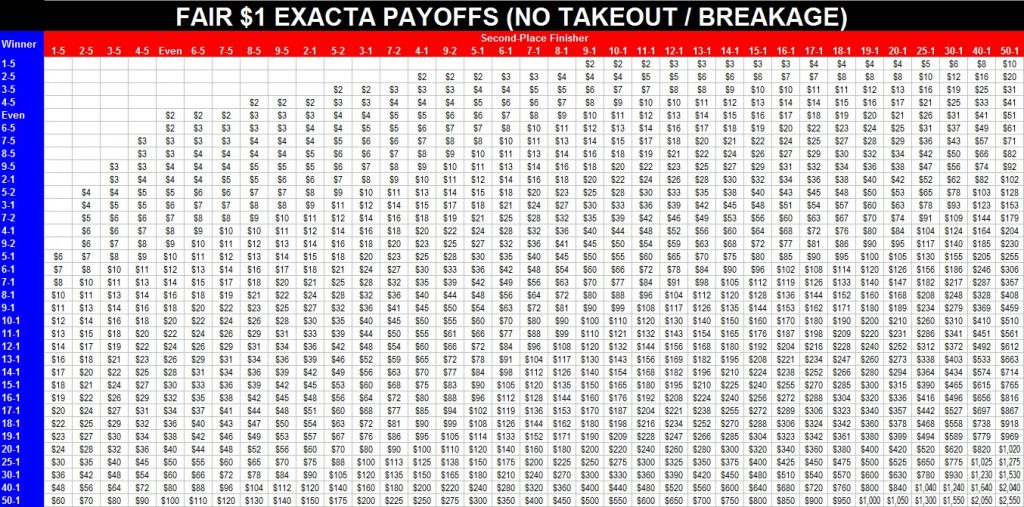I have often written about finding value in pari-mutuel betting pools and how, contrary to popular opinion, it is not all about price.
But sometimes you can have your pecan pie (I prefer it to any cake) and eat it too.
Before I expound upon this, let me first explain what value is — and what it is not. Value is not an objective standard that can be applied universally to distinguish between “good” and “bad” bets. The truth is: value is in the eyes of the beholder.
The belief that a horse is offering “great odds,” which is the CliffsNotes definition of value, is totally predicated on what the actual, or fair, odds should be — and that, of course, is a judgment call.
However, there is a way to gauge value that is relatively accurate and offers great prices to boot (this is the having one’s pie and eating it too business that I referenced earlier).
It involves betting exactas (or “exactors” in deference to my Canadian friends).
To demonstrate, let’s look at a race that I actually wagered on — the first at Finger Lakes on Wednesday, Nov. 16, 2016:

In this $3,500 claiming affair, VALKIMQUA was a “Speed Racer” play, which is a highly successful angle that has been making me money for years. So, even though the Chris Englehart trainee was bet down to 3-5 in the field of five (FIVE STAR DIXIE was scratched), I wasn’t dissuaded from wagering on the five-year-old mare to win, despite her 7-5 fair odds.
But the real value was in the exactas.
Above, you will see a list of exacta combinations featuring VALKIMQUA, along with the appropriate $1 payoffs (based on my computerized fair odds). If one feels confident making their own line, as I do, great — but there is an easier (and arguably more accurate) way of determining fair exacta payoffs.
Using the post-time odds as a guide, one can figure out how much the exacta should pay. By confining one’s wagers to those combinations offering better than fair odds, making a long-term profit becomes a whole lot easier (obviously, it helps if one starts with viable contenders).
Rather than bore readers with the math, I’ve attached a chart to make this process quick and painless.

So, in our sample race, we get the following “fair” $1 exacta payoffs:
5-VALKIMQUA (3-5 tote board odds) with 4-APPIAN (8-5 tote board odds) = $2 (lowest value listed).
5-VALKIMQUA (3-5) with 3-MISS VALUED (11-1) = $7.
5-VALKIMQUA (3-5) with 1-WISEMAN’S FATE (9-2) = $6.
The actual payoffs were as follows:
5-VALKIMQUA with 4-APPIAN = $2.
5-VALKIMQUA with 3-MISS VALUED = $29.
5-VALKIMQUA with 1-WISEMAN’S FATE = $5.
Even Stevie Wonder can see that the value here is clearly on the 5-3 combination. Mind you, this does not mean that this combo will win more often; it simply means that it is an overlay based on the actual odds (as well as my fair odds).
Needless to say, I was quite pleased when VALKIMQUA overhauled MISS VALUED late, paying $3.40 to win and keying a $29.50 exacta.
Try this method and chart on some races you like. I think you’ll find that, in the long run, it will make/save you more money than betting on some abstract notion of value.




